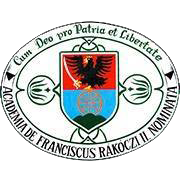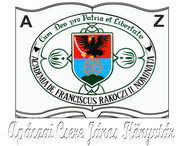Please use this identifier to cite or link to this item:
https://dspace.kmf.uz.ua/jspui/handle/123456789/5547| Title: | A verbőci templom bezárásának körülményei |
| Other Titles: | The circumstances of closing the Reformed Church of Verbőc (Verbovets) |
| Authors: | Székely Marianna Marianna Seikel Сейкель Маріанна |
| Keywords: | Ugocsa;templom bezárás;vallásüldözés;református |
| Issue Date: | 2022 |
| Publisher: | Nemzeti Emlékezet Bizottságának Hivatala - Református Közéleti és Kulturális Központ Alapítvány |
| Type: | dc.type.researchStudy |
| Citation: | In Erdős Kristóf és Szamborovszkyné Nagy Ibolya (szerk.): "Hívek maradtak bajban, vészben...". Fejezetek a Kárpátaljai Református Egyház 20. századi történetéből. Budapest, Nemzeti Emlékezet Bizottságának Hivatala-Református Közéleti és Kulturális Központ Alapítvány, 2022. pp. 207- 236. |
| Abstract: | A hruscsovi éra úgy került be a köztudatba, mint az enyhülés időszaka. A szovjet vezetés ugyanis a kommunista ideológia több pontjában is engedményeket tett. Ez azonban a valláshoz és az egyházakhoz való hozzáállásra nem terjedt ki, sőt, egy erőteljesebb ateista propagandahullám vette kezdetét a korszakban, amit állami rendelkezések sora is segített. Ennek hatására Szovjetunió-szerte megszaporodtak az egyházellenes intézkedések, melyek egyik példája a lelkészek szolgálatának ellehetetlenítése, a templomok bezárása, majd nyilvántartásból történő levétele volt. Nem lehetett kivétel ez alól a Kárpátaljai Református Egyház sem: a nevezett időszakban több templomának működési engedélyét vonták be. Ezek egyike volt a verbőci templom is, amelyben 1961–1989 között az állami hatóságok utasítására lelkész nem végezhetett szolgálatot.
Jelen tanulmány célja a verbőci templom bezárása körülményeinek feltárása: milyen okok miatt, milyen céllal zárták azt be, hogyan zajlott a folyamat, hogyan élte meg a gyülekezet a templomnélküliség időszakát, s milyen változásoknak kellett végbemenniük, hogy újra megnyílhasson a hívek számára az épület? A kutatás forrásául gyülekezeti jegyzőkönyvek, egyházi és állami levéltári iratok, kordokumentumok, valamint gyülekezeti tagok visszaemlékezései szolgáltak a templom bezárásával és megnyitásával kapcsolatban. Abstract. The Reformed church of Verbőc is one of those churches in Transcarpathia from which the Soviet authorities in the Khrushchev era withdrew their license. The local Hungarian community - with a Reformed history several centuries old - was deprived of service in its own church, which was expropriated by the state. When the authorities refused to register the congregation in 1961, they did not even offer an official, written explanation. They only recited a series of inconsistent and false reasons, like the dangerous state of the building, or that it was unattended by the members of the congregation. At that time, the building was not closed entirely: on Sundays and holidays members of the congregation were allowed to enter the church to sing and pray, but the pastor was not permitted to serve in it. If a member of the congregation wanted to attend ceremonies a (service, a wedding, or a christening) they The Reformed church of Verbőc is one of those churches in Transcarpathia from which the Soviet authorities in the Khrushchev era withdrew their license. The local Hungarian community - with a Reformed history several centuries old - was deprived of service in its own church, which was expropriated by the state. When the authorities refused to register the congregation in 1961, they did not even offer an official, written explanation. They only recited a series of inconsistent and false reasons, like the dangerous state of the building, or that it was unattended by the members of the congregation. At that time, the building was not closed entirely: on Sundays and holidays members of the congregation were allowed to enter the church to sing and pray, but the pastor was not permitted to serve in it. If a member of the congregation wanted to attend ceremonies a (service, a wedding, or a christening) they had to go to Feketepatak (Chorniy Potik), another settlement in the neighbourhood, which was at a distance of 2.5 kilometres from Verbőc. The two communities formed one administrative unit and, under Soviet law, only one Reformed church was allowed per unit. After the withdrawal of the church's registration, the local community maintained their own church, and paid their church dues as well as the work ofthe caretaker, the cantor and the bell ringer. The representatives of the state repeatedly tried to convert the building, into a gym, a storehouse, and even a concert hall. All these attempts failed because of the resistance of the Reformed community. The congregation did not acquiesce in the loss of their church. Unafraid of being punished, they kept submitting applications for the church's reopening. In 1983 a three-member delegation of the congregation travelled to Moscow in order to ask the Minister of Religious Affairs in person to re-register the church. The delegation got to speak with the Representative of the Protestant Churches, who promised them the reopening of the Reformed church of Verbőc, but his promises turned out to be hollow. In April 1983, the church was taken off the registers, and the door was locked, only the bells being allowed to be rung during funerals. The authorities did not inform the congregation of the final closing of the church. The building remained closed for six years, only allowed to function as an organ hall. Still, there was no concert held in it. After the Soviet ecclesiastic policy changed, the Reformed church in Verbőc was the first formerly closed church to be reopened. It is not known if the delegation to Moscow had played any part in this. |
| Description: | https://opac3.brff.monguz.hu:443/hu/record/-/record/bibMOK08329832 |
| URI: | https://dspace.kmf.uz.ua/jspui/handle/123456789/5547 |
| ISBN: | 978-615-5656-38-5 |
| metadata.dc.rights.uri: | http://creativecommons.org/licenses/by-nc-nd/3.0/us/ |
| Appears in Collections: | Székely Marianna |
Files in This Item:
| File | Description | Size | Format | |
|---|---|---|---|---|
| Hivek_maradtak_Szekely_M_2022.pdf | In Erdős Kristóf és Szamborovszkyné Nagy Ibolya (szerk.): "Hívek maradtak bajban, vészben...". Fejezetek a Kárpátaljai Református Egyház 20. századi történetéből. Budapest, Nemzeti Emlékezet Bizottságának Hivatala-Református Közéleti és Kulturális Központ Alapítvány, 2022. pp. 207- 236. | 36.85 MB | Adobe PDF | View/Open |
This item is licensed under a Creative Commons License





